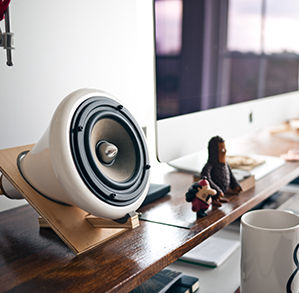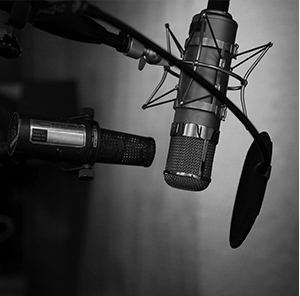

A good home theater system needs not only good auditory experience, but also good visual experience. When it comes to visual experience, it is not only the high-definition visual pictures with vivid color of the cinema display system, but also the unified coordination of the whole room's color, style and mood with the matching of the equipment of the cinema system. Here we have to consider the choice of home theater speakers.

Choosing a small speaker that can be placed on the desktop is also a lot of learning. The best way to choose a small speaker is to have a simple design, a moderate Bluetooth sound, or a low-power, flat-voiced speaker, etc. Such a speaker can not only meet the needs of friends to listen to music in the office, but also can not affect others because the sound is too loud, and it is small. Smart volume also ensures that such speakers do not occupy too much desktop space, can be said to be the necessary peripheral equipment in the office.

The room space and sound absorption coefficient will consume power, so the safe and reasonable sound box power required should be calculated according to the room space volume. After determining the sound box power, the power amplifier should be allocated according to the principle of 1.3-2.5 times, and the level of the power amplifier should be selected according to the investment budget. Like power amplifiers, speakers can be priced at a considerable distance at the same power but at different levels.


Microphone, also known as microphone, specially known as microphone, is an indispensable radio tool in recording studio equipment. The microphones commonly used in recording studios are electric (moving coil type, aluminum belt type), capacitive (DC polarization type), piezoelectric (crystal type, ceramic type). It can be divided into measuring microphone, voice microphone, musical instrument microphone, recording microphone and so on.

First, both of them constantly pursue the best sound effect. Secondly, they all need to use reverberation amplification information processing (such as balanced reverberation effectors), power amplifiers, speakers and various sound sources and other audio equipment. 3. The system is stable and reliable, and achieves the best performance-price ratio.

1. The difference between the whole and the part. It is the sound that is a whole system, and the speaker is only a part of the system. It belongs to the voice equipment, and the system also includes other mixing equipment. 2. The difference between professional and amateur. Both can make sounds. But the sound system belongs to the professional level from function to configuration. The speaker is a simple voice system consisting of one or two ordinary speakers. It's like a home theater can be called a sound, while a computer speaker is usually just called a sound box because of its simple function and low effect.

In recent years, with the popularization of intelligent terminals, the increase of audio usage scenarios, the improvement of consumers'requirements for sound quality, appearance and portability, and the development of audio and digital technology, audio products show the following trends: (1) Miniaturization and Portability With the rapid development of notebook computers, iPad/iPhone/iPod, tablet computers, flat-panel TV, smart phones and other new audio consumer electronic products, traditional audio has a trend towards miniaturization. Audio products are miniaturized. Users can carry them with them. They can be used in sports, travel, parties or other scenarios. They can get a better user experience than the speakers used to be peripherals of desktop computers and laptops.